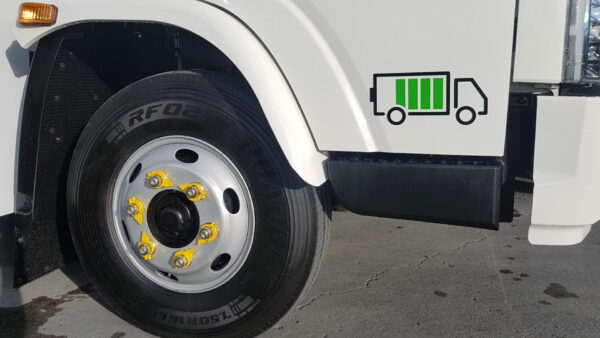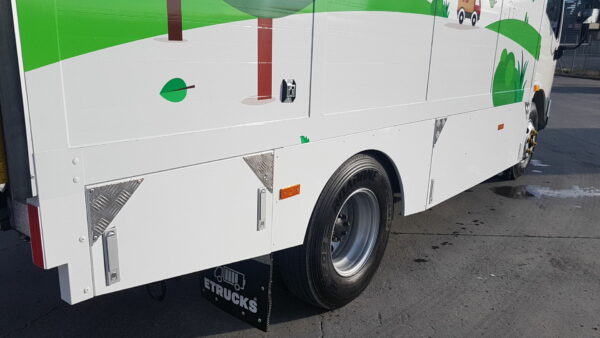You might have grown up with electric milk floats delivering milk to your neighbourhood. The technology used then wasn’t advanced enough to be used in other delivery vehicles, but now it is.
An electric truck or electric lorry uses batteries to power electric motors as opposed to diesel in an internal combustion engine. Current battery technology provides for a range of around 60-150 miles, depending on the specification (how many batteries are included), the weight of the payload (i.e. how much power is required to move the vehicle) and the terrain (i.e. hilly vs flat).

This range means they are now suitable for urban delivery work, and they provide multiple benefits over diesel trucks.

Advantages and disadvantages of electric trucks
- They are quiet, meaning that they can be used at night in residential areas
- There is no idling noise, meaning they do not create noise pollution
- They do not create fumes
- Drivers report that there is much less vibration in the cab as they are not sitting directly over an engine, and that they can hear outside the cab due to minimal transmission and motor noise
- Batteries are suited to stop-start operation much more than diesel engines are
- Batteries are suited to lightweight loads
- Braking energy is recaptured and solar panels can also be used to gain some benefit
- Maintenance costs are reduced because electric motors have fewer moving parts and require less attention
- Less dirty – no risk of spilling diesel on your boots, fewer fluids used, no diesel particulates from the exhaust
- It can be a marketing advantage for a company – many customers want their suppliers to be environmentally conscious
However, they do also have some disadvantages:
- The range is limited, which means that long-distances cannot be covered yet
- Some trucks have limited speeds due to the powertrain and are therefore only suited to urban deliveries
- Ubiquitous charging infrastructure is still a long way off, and if you want to charge, say, 10 electric trucks on a fast charge, a new substation would need to be installed
- Power cuts make it impossible to charge
- If you run out of battery power, you can’t simply walk to a petrol station, fill a can of diesel and fill up your truck (assuming you hadn’t created air locks in the fuel system by running your diesel engine totally out of fuel)
- They cost more to buy
- If the power generation doesn’t come from clean energy such as wind, solar or hydroelectric, the environmental benefits are dramatically reduced (i.e. burning coal to produce electricity is not ideal)
- The battery isolator switch is outside the cab and accessible by anyone (at least, it is in the two different trucks we tested)

The future
Large truck manufacturers such as Scania and Volvo are working on semitrailer tractor units/prime movers. However, it’s likely long term that these will be hydrogen-powered because hydrogen provides a similar performance to diesel in terms of the weight of the tanks. However, infrastructure issues are still present.
